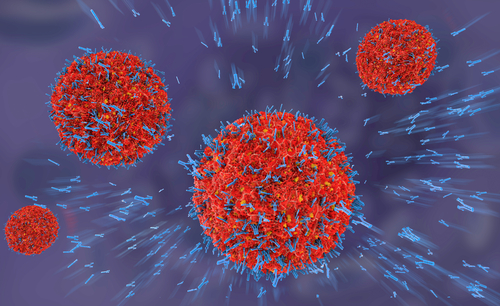Phase 3 Trial Results Challenge the Long-held Notion of How Myasthenia Gravis Originates

The results of a Phase 3 clinical trial are challenging the long-held notion that the same thymus gland mechanism is behind all early-onset cases of the muscle wasting disease myasthenia gravis, researchers report.
The team’s article about the subject appeared in the Annals of the New York Academy of Sciences. It is titled “Challenging the current model of early-onset myasthenia gravis pathogenesis in the light of the MGTX trial and histological heterogeneity of thymectomy specimens.”
MG occurs when antibodies attack a protein called the acetylcholine receptor, or AChR, at the juncture of nerve and muscle cells. This leads to muscle weakness.
Some people with MG have abnormalities in their thymus, a gland in the chest that plays a key role in the development of immune T-cells. The alterations can include thyroid atrophy, or shrinking; thymoma, or thymus tumors; and thymic lymphofollicular hyperplasia, or an enlarged gland.
The main objective of the Phase 3 MGTX trial (NCT00294658) was to determine whether removing the thymus would improve patients’ MG over three years.
Most scientists believe early-onset MG originates solely in the thymus, where T-cells are developed and trained to fight infections. They also think it’s a two-step process.
The first step, they believe, is a faulty version of AChR protein activating CD4+ effector T-cells. The activation leads to the T-cells viewing AChR as an invader that they need to fight.
Scientists think the second step is the T-cells siccing two other kinds of immune cells on cells that generate AChR. In addition to recruiting B-cell antibodies to the fight, T-cells activate an immune system component called the complement, which also works with antibodies to attack invaders.
The B-cell-recruited antibodies and the ones that the complement works with attack cells containing AChR. This leads to the activation of areas in the thymus responsible for the production of the antibodies that attack AChR.
Because of the key role the thymus is believed to play in generating MG, most scientists think that removing it is the best way to treat the early stages of the disease.
But a key finding in the trial was that removing the thymus helped some MG patients a lot, but others a lot less.
A possible reason for this, researchers said, is that the patients had different genetic and disease features. Another possibility they pointed to was differences in the length of time that patients had corticosteroid treatment before surgery. In fact, some patients had no corticosteroid treatment at all.
The differences in patients’ response to thymus removal challenges the notion that the same mechanism in the thymus drives all early-onset cases of the disease, researchers said. The trial findings suggest that the traditional explanation of how it originates may not fully reflect the range of events that modify its course.
The team plans to look closer at the trial results for signs that other mechanisms may be involved. Part of that would be to examine surgically removed thymus tissue samples.
The traditional view of the mechanism that underlies early-onset MG could be “refined by integrating MGTX-derived histological findings in thymectomy specimens and associated clinical [patient] observation,” the researchers wrote.






